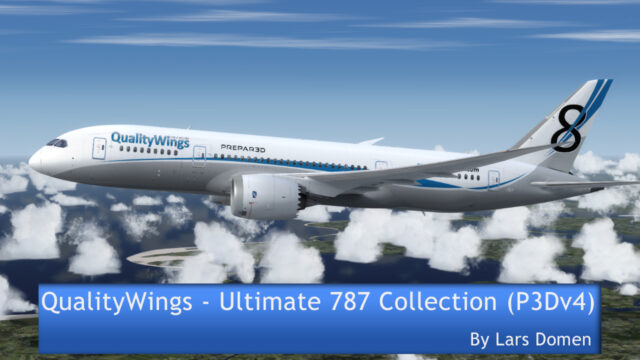
After a long development, the QualityWings Ultimate 787 Collection has been available for a while now. The 64-bit version for Prepar3D v4 has been since the end of May. That’s the version I’ll be looking at in this review.
The Boeing 787 Dreamliner is a long range, widebody aircraft intended to replace the Boeing 767 and compete with the Airbus A330 and A350. The 787 incorporates significant technological advances: a mainly composite construction, electrical systems replacing pneumatic ones and significant aerodynamic improvements just to name a few. The aircraft is offered to customers with 2 engine choices: the Rolls-Royce Trent 1000, or the General Electric GEnx.
The Dreamliner is built in 3 versions: the baseline 787-8, the lengthened 787-9 and the even longer 787-10. A proposed short range variant, the 787-3, was cancelled.
The 787-8 first flew on December 15, 2009 and started commercial operations with All Nippon Airways on October 26, 2011. The 787-9 entered service in 2014 and the 787-10 in 2018.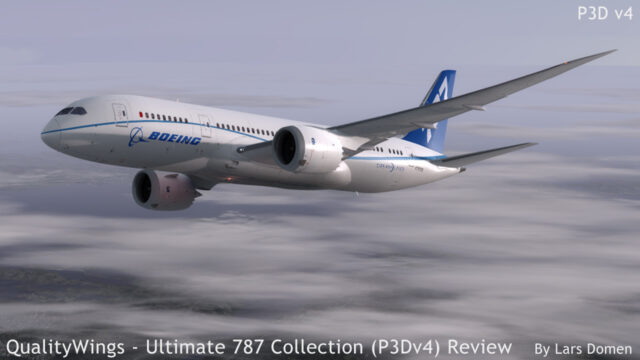
The QualityWings Ultimate 787 Collection covers all versions of the 787. Or at least, it will cover them. Currently, the 787-10 is still being developed, to be delivered in a free update to existing customers. The current package covers the 787-8 and -9, with both Rolls-Royce and General Electric engine options.
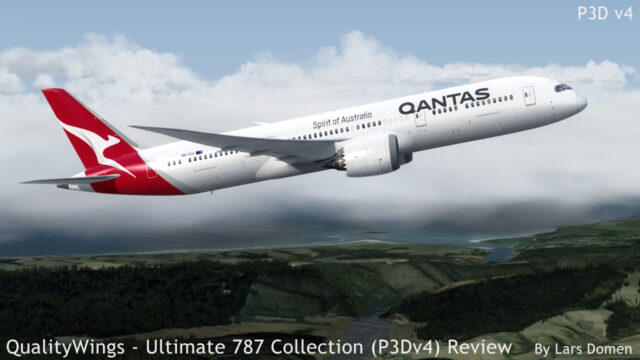
Purchase and Installation:
The Ultimate 787 Collection is available for FSX (both SP2 or Steam Edition) or for Prepar3D version 4. These 2 versions are separate purchases though, with the price for either set at USD $69.95.
Purchase and installation is handled by the Flight1 e-commerce and wrapper system. This system has proven to be very effective and reliable. It’s just a bit unusual to buy the product through the wrapper instead of via the website beforehand if you’re new to their system.
The downloads come in at 524MB for the FSX version and 590MB for the P3D4 version. This excludes any airline liveries, as the default installation only has the QualityWings house liveries. No less than 65 airline liveries are available on the QualityWings website, with numerous more from 3rd party repainters on the usual websites.
After installation, you get the aircraft in 4 variants (787-8 RR and GE, and 787-9 RR and GE) as well as the QualityWings Dispatcher utility.
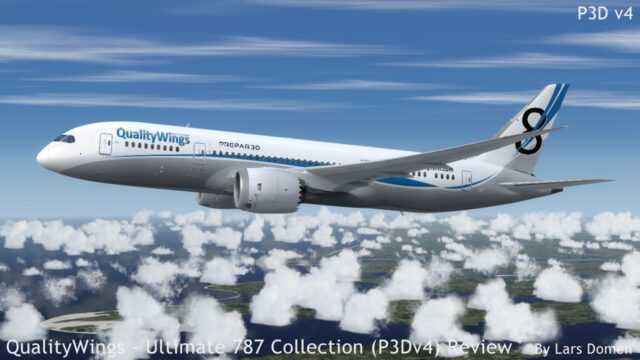
Exterior:
For an airliner, the 787 has quite the distinctive shape. And of course, this is well represented in the simulator. QualityWings has delivered a good looking 3D model, with all the expected bells and whistles.
Animations are nice and smooth overall. And of course, it being a 787, there’s a huge amount of wing flex, which this model shows quite well. Again, the movement is smooth and realistic looking. It also responds nicely upon landing, bouncing a bit before settling into the final position. The wings do not seem to be influenced by fuel load.
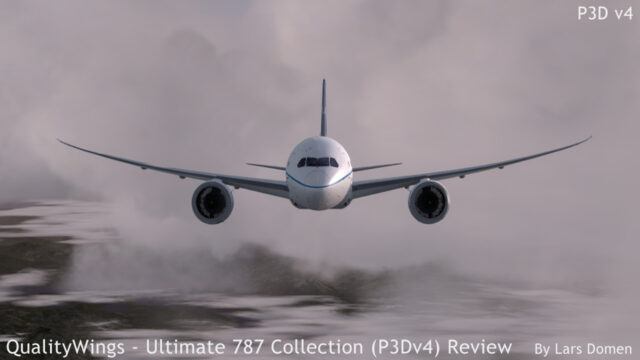
The texture work on the 787 is good, but not amazing. Textures are detailed and sharp, and have some realistic wear and tear at relevant places. But I think there’s more potential in P3D (even FSX) textures that goes unused. The airline liveries available for download didn’t impress either. They’re good enough to represent the airlines they cover at a glance, but they don’t stand up to closer scrutiny. Wrong registration numbers, questionable colours and livery features that are approximate at best in size and placement are all problems a quick quality control check would find.
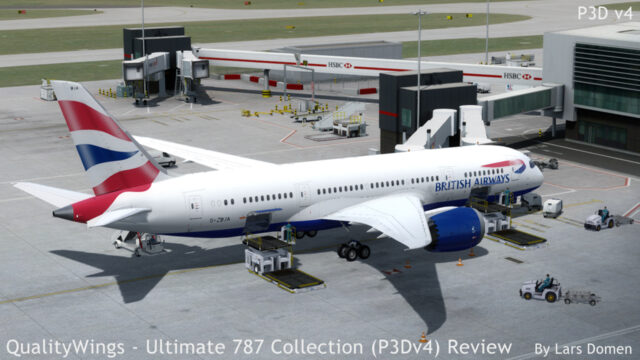
The night lighting on the exterior model looks quite good. Of course the actual model is lit up by all those lights. The red beacon light splashes on the wings do seem incredibly bright, a bit too much I think.
The 787 makes full use of dynamic lighting technology in P3Dv4, so you can expect the exterior lights to light up the environment realistically.
A nice extra feature here is that, using a 2D popup panel, you can set the intensity and colour of the cabin lighting. This is then clearly visible through the see-through windows in the exterior model. There’s 7 colours and 3 intensity levels to choose from. And of course you can also turn them off.
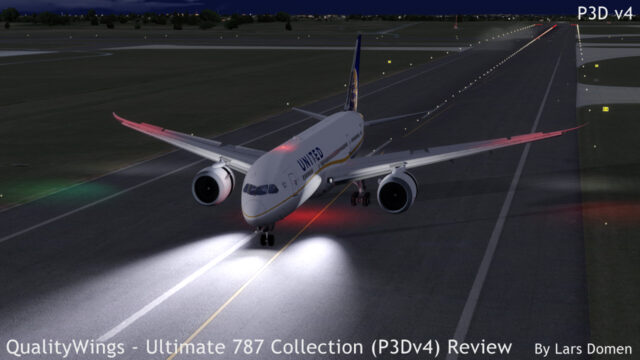
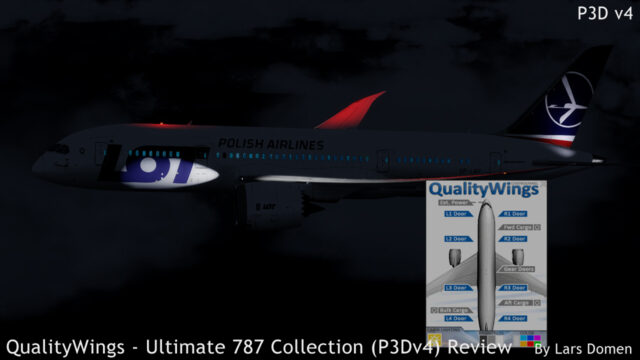
Interior:
When we hop inside, we’re greeted by a detailed model of the 787 cockpit. There’s lots of details and nuances to be found, resulting in a very pleasant feel when using the aircraft. Modelling is fine and detailed, and texturing is just as finely done. The flight deck is clean and tidy overall, but not surgically so. There’s some dust and smudges to be found, especially on the displays. Subtle, but especially in simulated sunlight, particularly good looking.
A slight downside here is that, because of all the fine details, there are times when moderate anti aliasing seems to have a hard time keeping up, resulting in jaggy lines crawling over my screen. Higher AA settings improve this, at the cost of frame rates.
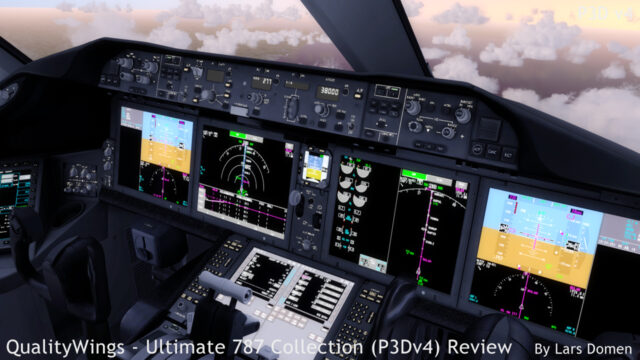
A bigger problem for me, is that I have definite readability problems on the simulated Electronic Flight Bag (EFB). These resulting from both sharpness and contrast problems. Text has a tendency to appear soft around the edges. If this happens to white text on a light gray background, it’s very hard to read.
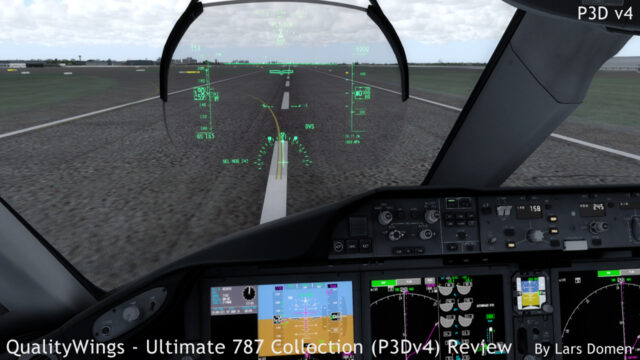
QualityWings has included TFDi’s “TrueGlass” technology which gives us good looking and relatively realistic rain effects on the windshield. A very nice touch that finally makes handling the aircraft in the rain have a bit more of an impact on visibility.
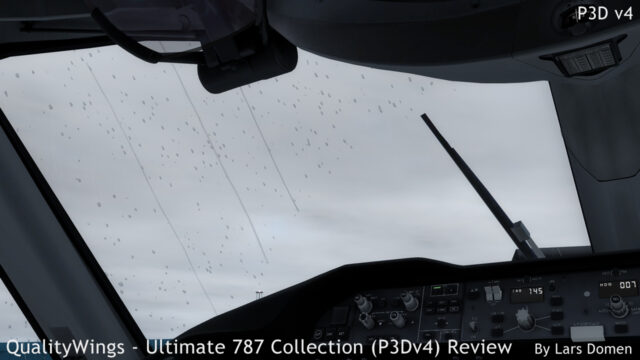
The night lighting of the virtual cockpit is not the worst I’ve ever seen, but also far from the best. The glareshield flood light has 5 intensity levels, none of them looking particularly good. All other lights are of the ‘on/off’ variety. And I can’t fathom why the glareshield backlight also radically changes the lighting on the actual keys. QualityWings has announced that from the next update on, the 787 will feature TFDi’s “RealLight” technology, which I expect will be a huge and welcome improvement on the cockpit lighting side of things.
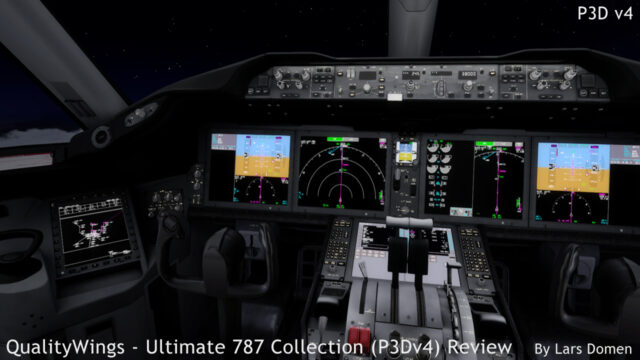
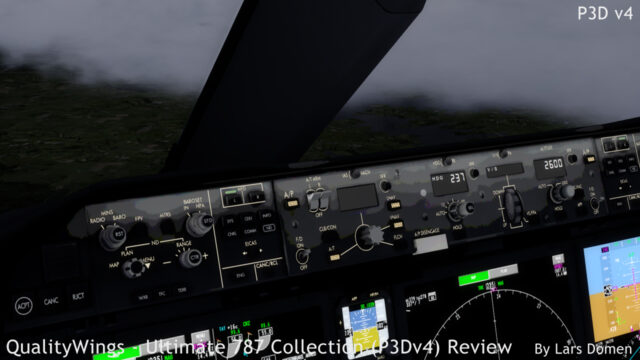
Systems:
The Ultimate 787 Collection is a definite move away from the ‘Light’ systems QualityWings implemented on their previous products. The 787 comes with a huge amount of systems simulated. First of all, while there are no full 2D panels, there are some useful pop-ups. There’s a 2D pop-up Control Panel that lets you connect the GPU, open doors and other external animations, and change the cabin lighting.
Other pop-ups cover all 5 of the MFD’s. The bottom centre one includes the keyboards next to it. Finally, there’s a 2D popup for the Captain’s radio Tuning Control Panel.
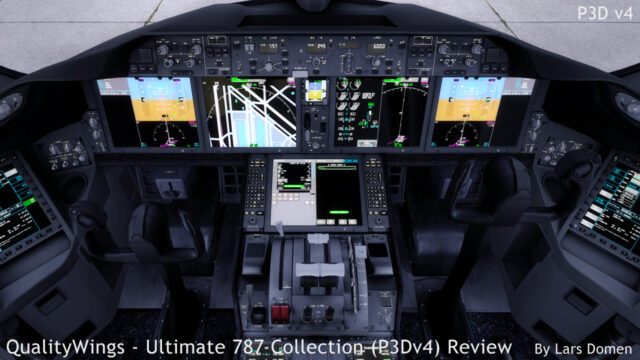
When looking at how the aircraft is simulated, we notice a large amount of functionality. The Boeing 787’s cockpit is basically built around 5 very large displays with a significant amount of interoperability. QualityWings does a commendable job is simulating this. There’s an enormous amount of different screen configurations you can choose from as a pilot. Captain and first officer side displays are all functional and independent. And while pilots in the real 787 use a ‘Cursor Control Device’ (think something like a touchpad on a laptop, but fancier) to interact with these large displays, in the QualityWings 787 you can just use your mouse cursor to click stuff.
One problem I experienced, which might be related to being able to use the mouse on the displays, is a lot of screen flickering in certain situations. Especially when using 2D panels on top of the 3D VC, this can get really annoying.
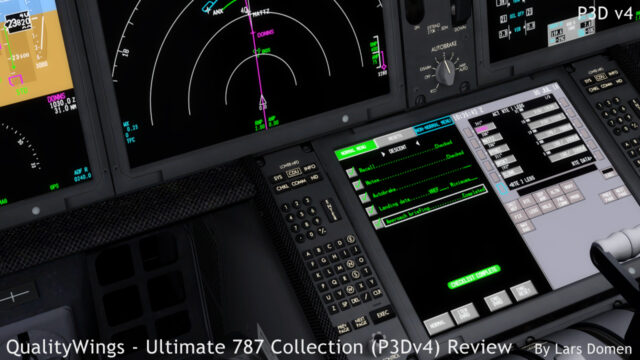
When you start playing with the 787’s systems, you’ll notice that al lot of them are simulated and give realistic indications on the MFD system pages. And while the manual states: “Not simulated in the QualityWings 787” numerous times, this is never in any system I would call critical for a simulated flight, and even rare with features that I’d consider nice to have.
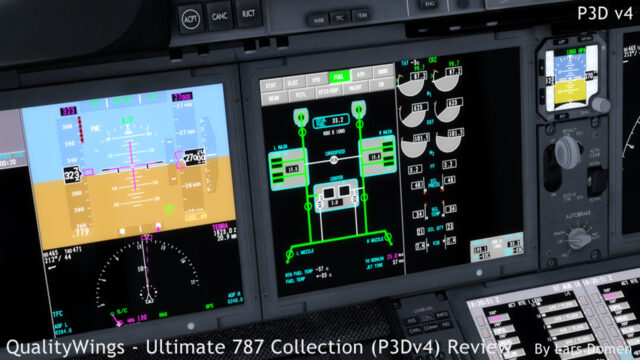
There are some items that act a bit weird, or could do with some polishing though. One big, if rare example jumped out when I was trying to recover a saved flight: the aircraft loaded cold-and-dark in the air, and while the control surfaces didn’t move in the external views, the aircraft was perfectly controllable in the glide. Quite unexpected. An edge-case to be sure, but it raises some questions.
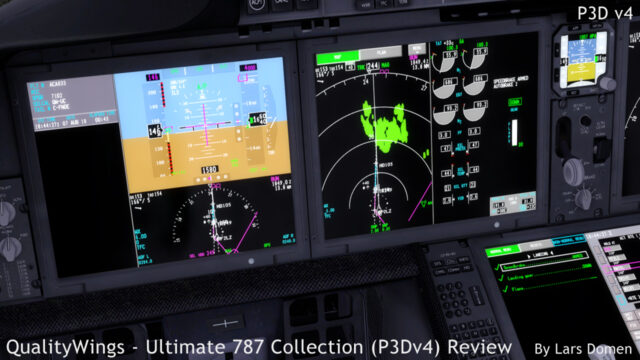
The autopilot behaviour could also do with some polishing. At times it behaved quite unexpectedly. It even behaved differently than what is described in the tutorial at times. When looking at autoflight accuracy, I’ve run into situations where the autopilot would constantly and significantly overshoot the target horizontal profile. This happened in all phases of flight. Also when intercepting a localizer. At the same time, the autopilot really screwed up an autoland and subsequent rollout with just a slight crosswind. So definite room for improvement here.
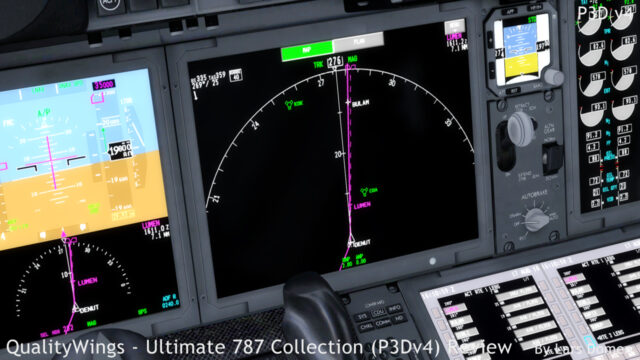
I quickly mentioned the Electronic Flight Bag before. Let’s take more of a look at it. While a lot of options of the real EFB are not functional in the one that comes with the QW 787, some other very nice ones are. First, simulator specific, the EFB can be used to set fuel and payload from within the simulator. Unfortunately, this is done through finicky and inaccurate sliders, with no option to input the numbers directly. Although improvements in this aspect have been announced for a future update.
Two other features of the EFB are a performance calculator and the ability to display airport charts.
The performance calculator can communicate with the FMC, relieving you of the need to input much of the same information twice. One feature that I was strongly hoping for though, isn’t quite there: the Takeoff Performance calculator does not give you useful data when letting it pick optimal flap settings or engine derates for the calculation. It’ll just display ‘optimal’ in the results. Not useful at all. At present, it’s just good to calculate more accurate V-speeds.
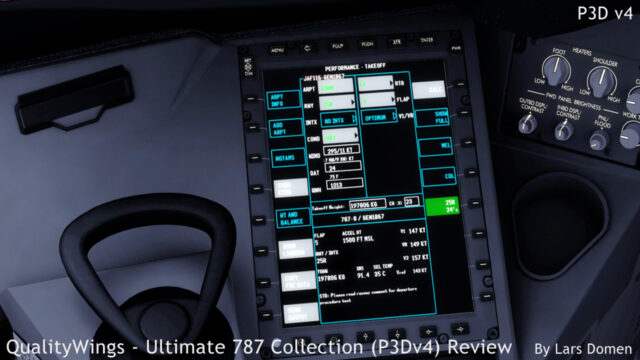
The terminal charts feature has 2 ways to display charts in the 787 EFB.
The first and easiest is having it display automatically generated ‘on-the-fly’ charts based on the installed navigation database. This can be useful, as this generated charts displays both the lateral and vertical profile of the approach, as well as the communication and navigation frequencies for the airport. On the downside, it tries to build a chart based on raw data, and doesn’t always do a good job. It’s also not nearly as clear and good looking as an actual published chart.
The second way is to save actual charts in the correct format (.jpg) and name in a specific folder so they can be displayed on the EFB. Unfortunately, I have been unable to get this feature to work. It’s also very labour intensive even if it should work.
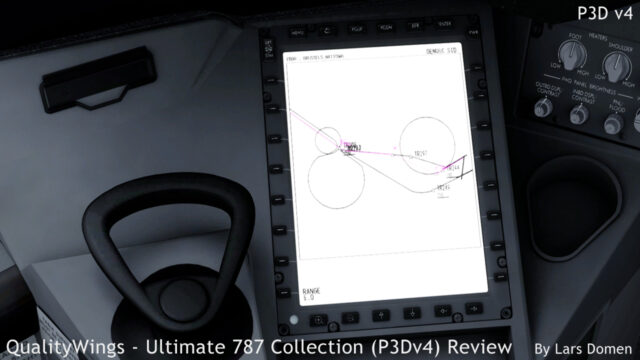
For a long range, detailed airliner, saving and loading panel states is an absolute must-have. And this feature is available in the QW 787. It’s also working quite well. Some room for improvement: it does not automatically load the correct panel state when loading a saved flight, and setting a default state requires manually editing a config file.
On the other hand, there are 2 unique features QualityWings put in the 787 that stand out, both aptly named: Jump Ahead and Approach Reposition.
Jump Ahead lets you ‘jump ahead’ to any point in your flight plan. When used, the sim will reload at that waypoint as if you’ve flown there: fuel is used, time has gone by and so on. A very nice feature if you don’t have the time or inclination to actually fly for hours and hours, but still want to complete a long distance flight.
Approach reposition is similar to Jump Ahead, but positions you on any approach that’s in the navigation database. While not perfect (you need to check that the aircraft is set up correctly before unpausing) this is a very interesting feature if you want to practice shooting some approaches.
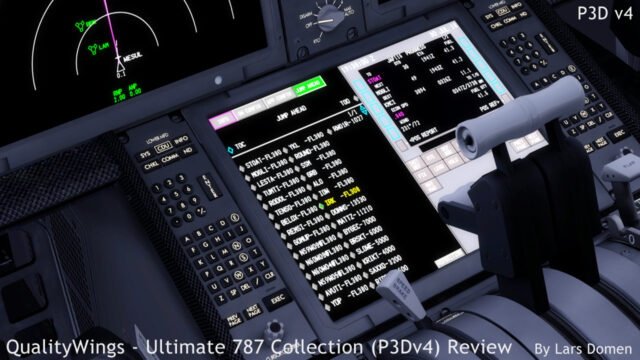
Sounds:
I always find the aural aspect of an add-on the hardest part to say something about. Unless the sounds are extremely good or particularly bad, but that’s not the case here. The QuailtyWings 787 comes with a good soundset that sounds believable at all times. There’s a clear difference between the 2 engine choices, which of course is expected.
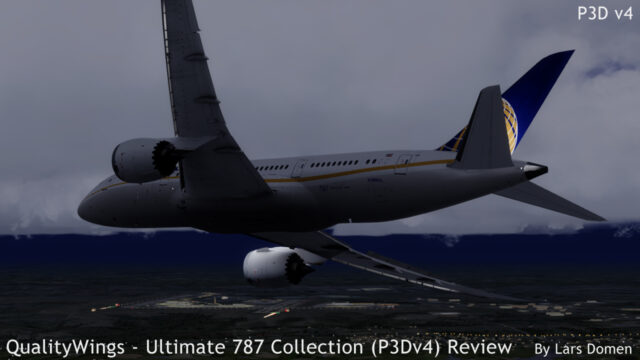
QualityWings also included their QualityWings Passenger Announcement System (QWPAS) and QualityWings Crew Audio System (QWCAS). QWPAS plays Passenger announcements at key phases during flight, and those announcements can be airline specific, tied to the livery you’re using.
QWCAS is a virtual crew that informs you of certain events during your flight.
While some people might like these features, I’m glad they can be turned off: unless the pilots turn on the Cabin Interphone on their audio control panels, I doubt they can actually hear the cabin announcements clearly in real life. And QWCAS also includes Pilot Flying calls, which is just weird as that’s the role I’m playing. Having a recorded voice announce that we’ll be starting the engines AFTER I turn on the starter, is just stupid in my opinion.
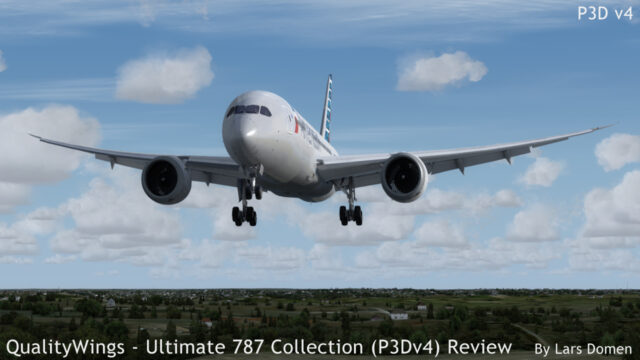
Flight Model:
While Boeing’s approach to the matter is very different to Airbus’s, the 787 is a fly-by-wire aircraft. Instead of the hard limits to the flight envelope that Airbus imposes, Boeing does it more subtly. The pilots in a 787 are discouraged from excessive manoeuvring by increased control forces. Now, must home simulator users don’t have force-feedback controls, so QualityWings had to find a way to simulate this. Their solution was to decrease control effectiveness when the real aircraft would increase control forces. An elegant and quite intuitive solution if you ask me.
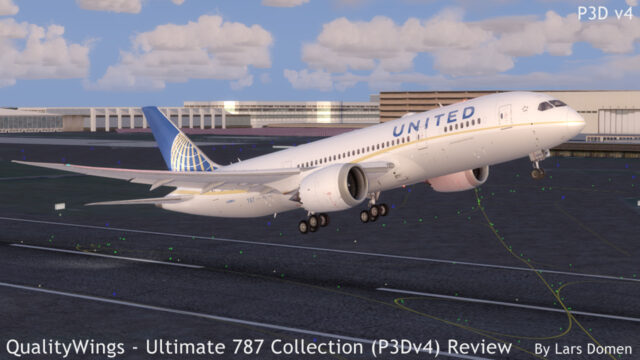 Apart from this, the aircraft behaves about as you’d expect. It’s a big widebody airliner, but not on the extreme end of the scales. It is responsive and pleasant to fly, while still managing to convey the feeling of size and inertia. Taxiing the aircraft in P3D is smooth and predictable, and brake effectiveness seems realistic. Within the limits of the, at times weird, ground friction model in FSX/P3D of course.
Apart from this, the aircraft behaves about as you’d expect. It’s a big widebody airliner, but not on the extreme end of the scales. It is responsive and pleasant to fly, while still managing to convey the feeling of size and inertia. Taxiing the aircraft in P3D is smooth and predictable, and brake effectiveness seems realistic. Within the limits of the, at times weird, ground friction model in FSX/P3D of course.
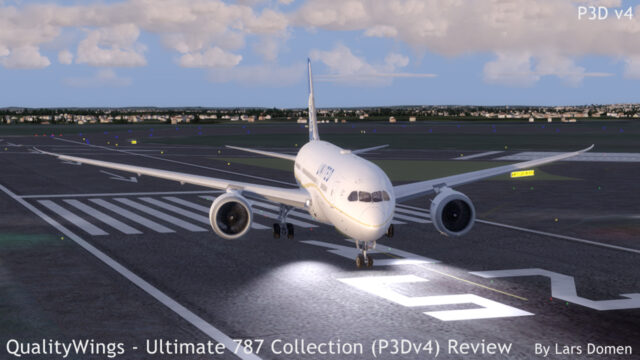
Conclusion:
With the Ultimate 787 Collection, QualityWings has made a clear leap away from the ‘light’ product category. The aircraft is loaded with details and features. It’s a nice add-on to have, and pleasant to use. If you want a state-of-the art long range airliner in your hangar, this one is definitely worth considering. There are some aspects of this add-on that require some improvement and polishing though. Autopilot behaviour and user friendliness are aspects that could be improved. Another aspect to note is that the leap to study-level complexity came with a significant leap in price as well. It comes in at USD $69,95, and FSX and P3Dv4 versions are separate purchases. On the upside again, QualityWings is still updating the 787, with the 787-10, “RealLight” and numerous improvements promised or announced. So hopefully the product will be even better and more complete soon.
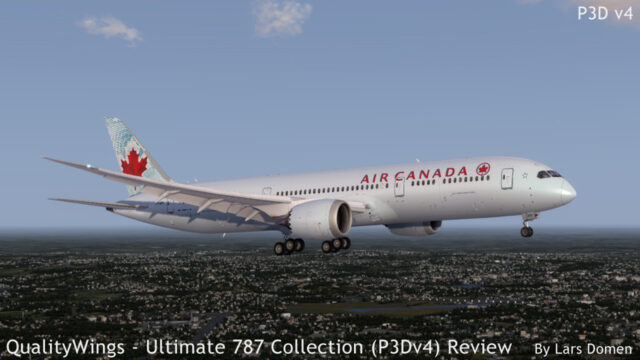
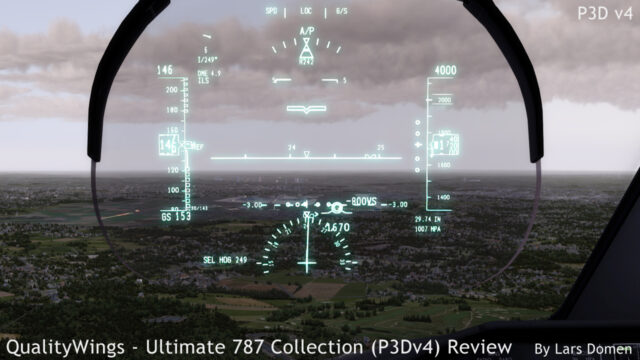
Like:
- Good looking visuals, especially the virtual cockpit
- Detailed systems
- Believable flight dynamics
- Complete package, with both 787-8 and 787-9 with both engine options, and 787-10 promised
- Inclusion of “TrueGlass” technology
- “Jump Ahead” and “Approach Reposition” features are great to have
Don’t like:
- Definite defects in user friendliness:
- Unwieldy sliders for payload and fuel
- Still need to go and edit files for some options
- Labour intensive and unreliable process to get airport charts on EFB
- Room for improvement in autopilot behaviour and accuracy.
Useful Links:
Test System:
Intel Core i7-6700K @ 4x4GHz (stock speed)
32GB DDR4 RAM
Asus GTX 1070 Strix Gaming 8G
Windows 10 64 bit
Prepar3D v4
Software Used:
Active Sky 2016 + Active Sky Cloud Art
Aerosoft Mega Airport London Heathrow Professional
Orbx FTX Australia
Orbx FTX Global
Orbx YMML Melbourne v3
Real Environment Extreme Texture Direct + Soft Clouds
TropicalSim Kansas City Intl KMCI
Ultimate Terrain X Europe v2


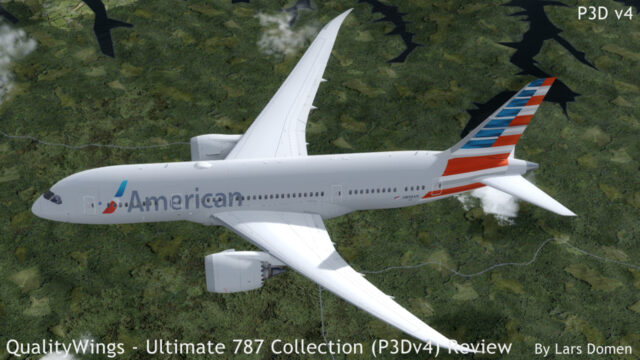
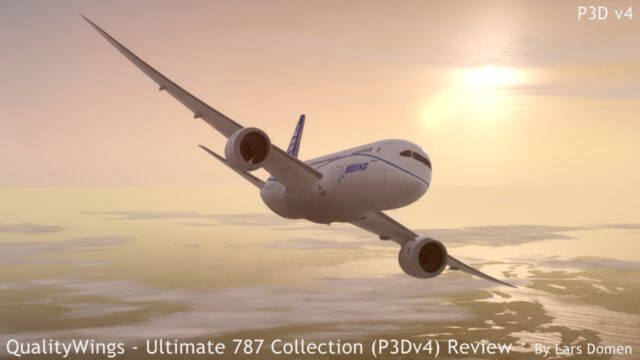
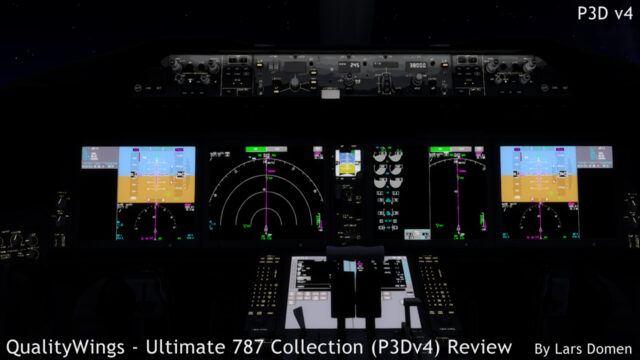
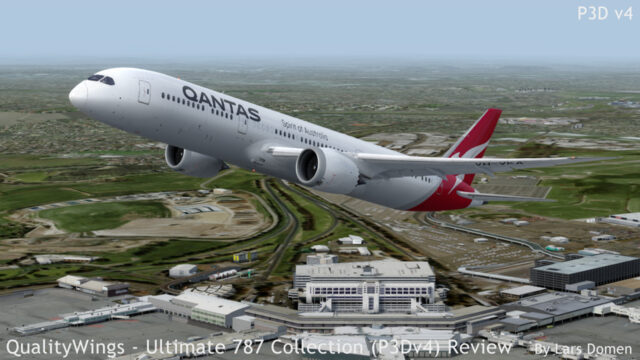
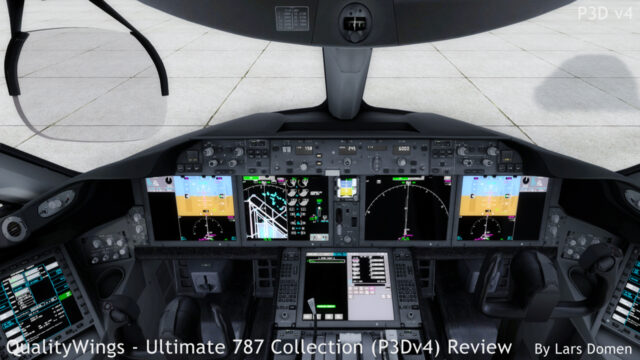






A cool gimmick which is not described in this test:
Tak the bird into a really TIGHT turn… and hear the passenegrs cry! 😉
Nice Review.
But the conclusion ??? State-of-the-art airliner, study level. But inaccurate Autopilot with unexpected behaviour. How does that fit together ? IMO that`s a no-go for “study level” (whatever that may be).